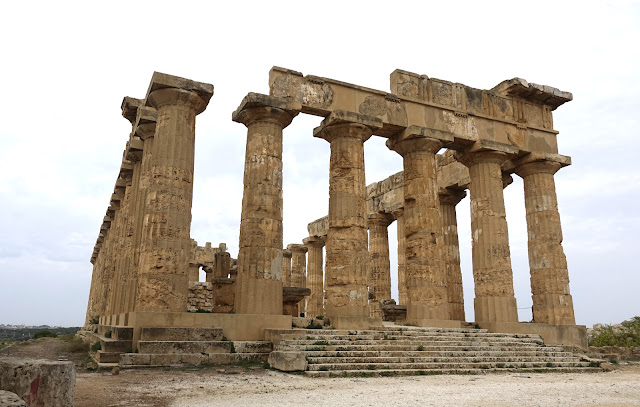We arrived in Palermo after a short flight from Malta. Brian picked up our rental car (Fiat Panda) that would carry us about 300 miles along the southern end of the island of Sicily. Our plan was to drop off the car at the end of our vacation in Catania and fly to Amsterdam from there and the next day to board our Delta flight for the ten hour trip to Portland.
On with our story of the trip...........
In 1693 a 7.4 earthquake that lasted for four minutes struck southern Sicily. The destruction was massive and destroyed almost all of the ancient buildings that had stood for centuries. More than 60,000 people died. When rebuilding eventually began the decision was made to rebuild in the Baroque style so popular at that time. It is remarkable that some of the most ancient Greek and Roman structures survived.
On with our story of the trip...........
In 1693 a 7.4 earthquake that lasted for four minutes struck southern Sicily. The destruction was massive and destroyed almost all of the ancient buildings that had stood for centuries. More than 60,000 people died. When rebuilding eventually began the decision was made to rebuild in the Baroque style so popular at that time. It is remarkable that some of the most ancient Greek and Roman structures survived.
These are the Greek ruins at Selinunte in southern Sicily. They date from the sixth century BC and pre-date the Romans. This temple was dedicated to the Greek god Hera. It was part of a group of four temples clustered together but all the rest have fallen into a pile of boulders. The detail on the columns is amazing. It’s easy to see the fluted edges that are still sharp and clear.
There are a number of Greek ruins located here in this part of Sicily including the best one in the Valley of the Temples on Agrigento. Unfortunately on the day we were in Agrigento to see the temples the exhibit was closed so we missed it. It was a big disappointment. We found consolation in the fact that we were able to view this temple at Selinunte.
The remnants of another temple, now only a few columns and boulders remain.












No comments:
Post a Comment